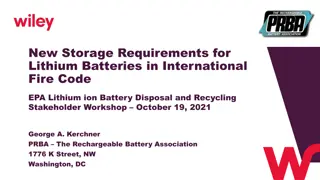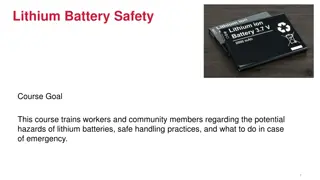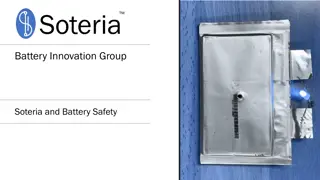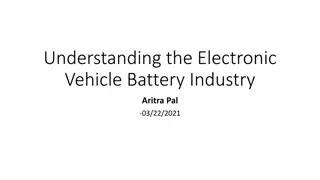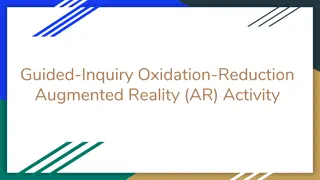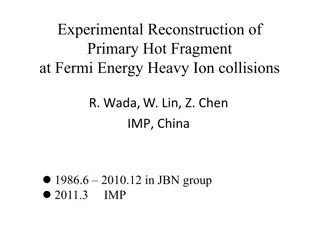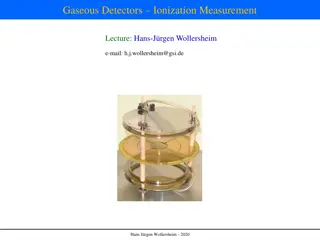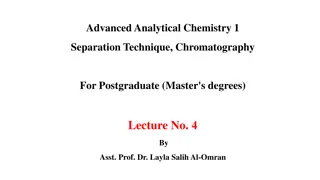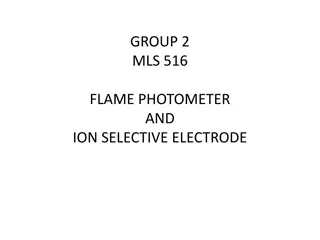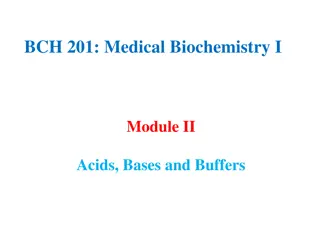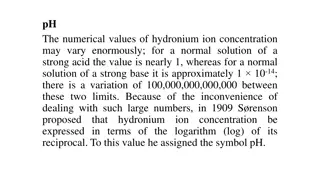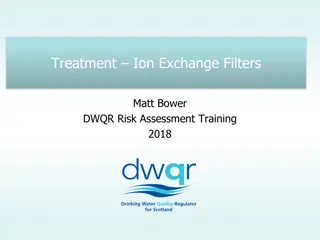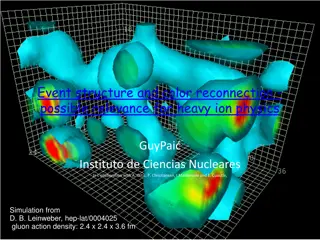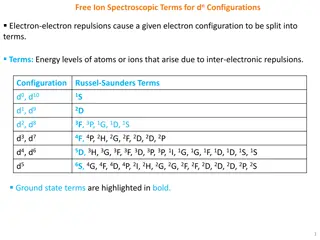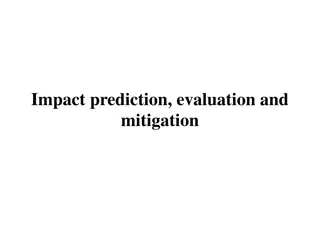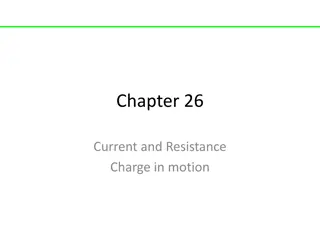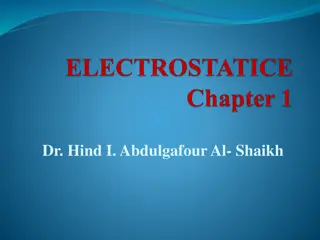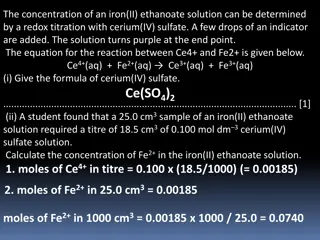Understanding State of Charge Prediction in Lithium-ion Batteries
Explore the significance of State of Charge (SOC) prediction in lithium-ion batteries, focusing on battery degradation models, voltage characteristics, accurate SOC estimation, SOC prediction methodologies, and testing equipment like Digatron Lithium Cell Tester. The content delves into SOC management for maximizing usage, planning, safety, and energy management in various applications.
Download Presentation

Please find below an Image/Link to download the presentation.
The content on the website is provided AS IS for your information and personal use only. It may not be sold, licensed, or shared on other websites without obtaining consent from the author. Download presentation by click this link. If you encounter any issues during the download, it is possible that the publisher has removed the file from their server.
E N D
Presentation Transcript
State of Charge Predication of Lithium-ion batteries Sahana Upadhya Lukas Desorcy Mike Wagner Allison Mahvi 1
Battery Degradation Model State of Charge (SOC) Depth of Discharge (DOD) Number of cycles Degradation of the battery with every cycle of charging and discharging. Cyclic aging Aging of the battery over time due to all processes that lead to degradation other than cycling Rest SOC Temperature Calendar aging Validate model through testing: Cyclic testing Aging Use case SOC estimation Relaxation tests rest case SOC estimation Number of cycles Battery degradation model Depends on Starting and ending SOC of the half-cycles 2
State of Charge (SOC) SOC is a measurement of the amount of energy in a battery expressed in percentage. VOLTAGE Simplest estimation of SOC Charging Discharging ? transfer Potential Difference Potential Difference Voltage Voltage Energy Energy SOC SOC 3
Voltage Terminal Voltage Internal Resistance Rest Internal resistance depends on many parameters like time, SOC, SOH Concentration gradient in electrode of li-ion battery Time SOC Voltage Equalizes SOC Voltage relationship not parallel Complex Therefore, voltage changes with time 4
Accurate Estimation of State of Charge Used in Lithium batteries Transport application Variability in drive cycles and operational profiles Accurate assessment of available energy High precision estimation of SoC Maximized usage and planning Safety, reliability and endurance Improved energy management 5
SOC prediction with use SOC prediction at rest Equipment Relaxation tests at varying SOC Develop a relationship between various parameters and the relaxation curve Predict the relaxation curve Cyclic testing of the battery Data processed Collaboration with two other teams to develop physics-based model and machine learning models Cyclic tester Battery Management software Thermal Chamber 6
Digatron Lithium Cell Tester Cyclic testing Charging, Discharging, Rest Data acquisition rate 2 ms per circuit 21 circuits with different current voltage capabilities. Current Voltage capabilities 0.25 100 A 0 - 18 V 1000 A 5 V 0.1 100 A 5 100 V 7
Battery Management Software Write intricate test programs. Register required data voltage, current, Ah, temp at desired frequency Monitor tests in progress Generate basic graphs Store battery characteristic data 8
Thermal Chamber Controls Ambient temperature when performing tests. Provides a protected environment to perform tests fire safety features. Temperature range: -45 to 190 . 9
Battery Details Parameter Cell geometry Pouch ?????2 Graphite Anode Material Cathode Material ????6 4.2 V Electrolyte Thermocouples OCV of full cell (100% SOC) OCV of empty cell (0% SOC) 2.75 V Cell capacity 5450 mAh Battery Fixture 10
Cyclic testing C-rate is the rate at which current is supplied to fully charge a battery. 1C 1 hour to fully charge battery. 4C hr = 15 min to fully charge the battery Cyclic testing at 1C, 2C, 3C, 4C 50 cycles Step Operator Nominal Value Rlevel = 3 Limit Action Registration 1 SET > 4.2 V < 3 V > 60 C1 ERR 2 ERR 2 ERR 2 STANDARD Data Collected: Current Voltage Electric Charge (Ah) Temperature (four thermocouples) 2 3 4 BEG DCH CHA 1 sec 1 sec 1 sec 21.8 A 21.8 A 4.1 V < 3.01 V 5 sec & < 0.545 A 30 sec 5 6 PAU CYC 1 sec These tests very performed at ambient temperature11 20*
- Top - Edge - Bottom - Side edge 12
Cyclic data used to calibrate physics-based model Physics-based model used to generate accurate cell performance data Experimental data + Physics-based model data Train Machine Learning model 13
Physics based model The physics-based modeling approach can simulate the electrochemical and intrinsic dynamic behavior of a cell. Characterized through 5 main Partial Differential Equations developed in GT- AutoLion (li-ion simulation software) Experimental data is used to calibrate the battery 14
Cathode capacity loading N/P ratio Initial SoC Step 1 - C/20 test Cathode loading: Capacity of cathode per unit area of the cathode. Cathode thickness Anode thickness Separator thickness Anode and Cathode particle size Heat transfer coefficient Step 2 1C-4C test ????? ??????? ??? ??? ??????? N/P ratio = This relates to amount of active material in each electrode Match experimental Open-circuit Voltage Match SOC Step 3 Refining 15
Physics-based model Feed forward neural network model Predicted SoC values for the last 10 cycles of each C-rate 10 cycles at 1C C-rate Predicts SOC within 1-2% root-mean-square- error (RMSE) Predicts SOC within 1% RMSE A combination of physics-based modelling and ML may prove valuable for longer test programs and State of health analysis and testing 16
Relaxation Tests Relaxation Tests Identifying a correlation between open-circuit voltage, SOC and relaxation time required to achieve the stabalized OCV 17
Relaxation time Relaxation time Battery takes time to stabilize and reach a final stable Open Circuit Voltage (OCV). Voltage Drop Change in current Forced regime Current not equal to 0 Relaxation No current battery stabilization Voltage Drop Forced Regime Relaxation Voltage Drop 18
If a 24 hr OCV value is used to find SOC on a 1 hr OCV vs SOC curve An approximate error of 4% SOC introduced for a difference in 2 mV C D B C OCV measured after 24 hr of relaxation D Same OCV on a 1 hr relaxation curve E Over-estimation of SOC F Actual SOC value F E 19 Li, An, et al. "Fast characterization method for modeling battery relaxation voltage." Batteries 2.2 (2016): 7.
Relaxation time and Battery History OCV measured for different SOCs after different relaxation periods after charge and after discharge Relaxation time OCV approaches stable value Battery History plays a role in relaxation characteristics. 20 Li, An, et al. "Fast characterization method for modeling battery relaxation voltage." Batteries 2.2 (2016): 7.
Objective Develop correlation between relaxation curve and SOC Voltage at any stage of relaxation can be related to an accurate SOC 20 min 1 hr Identify parameters that effect the relaxation curve 21
Parameters C-rate 1C, 2C, 3C, 4C - Rate at which current is supplied Temperature 20 , 30 , 40 Start and End SOC Capacity charge/discharge - Energy entering/leaving the battery Charge/discharge - Effects of battery degradation State of Health 22
Initial Test Plan 100 100 90 95 80 SOC 70 90 60 SOC 50 85 Time 40 30 Charge to 100% 20 10 Discharge by 5% 0 Time C-rate: 1C and 4C Temperature: 20 1C and 4C test performed on two different batteries Relax for 10 hours 23
Step wise discharge and relaxation 24
Time taken for voltage to stabilize 25
Final voltage for higher C-rate higher especially for higher SOC Will it converge if allowed to rest for longer? Battery stabilizes Voltage drop larger Two different batteries were used. The capacity of both the batteries are slightly different 26
Analyzing the time taken to reach fully relaxed voltage Relaxation ends Relaxation begins ?????????? ?? ??????? % =?? ?? .100 ?? ?? ?? For each point i during the relaxation 10 hours For each SOC relaxation curve SOC 5 95 90 85 80 75 70 65 60 55 50 45 40 35 30 25 20 15 10 27
Next Steps Perform the same test again to see if the relaxation behavior is repeatable. Perform similar tests for the remaining SOCs. Attempt to find a correlation between various parameters and voltage at various stages of relaxation. Use physics-based model to predict the relaxation curve and therefore estimate the accurate SOC. Perform further cyclic testing for state of health analysis and study aging mechanisms. 28
Thank You 29
C D B F E C OCV measured after 24 hr of relaxation D Same OCV on a 1 hr relaxation curve E Over-estimation of SOC F Actual SOC value 30
If a 24 hr OCV value is used to find SOC on a 1 hr OCV vs SOC curve An approximate error of 4% SOC introduced for a difference in 2 mV 31
Test Plan C-rate 1C 2C 3C 4C Temperature 552 relaxations curves 20C 30C 40C End SOC Charge and discharge 100% SOC 80% SOC 1% discharge intervals Relax 20 relaxations 80% SOC 20% SOC 10% discharge intervals Relax 6 relaxations 20% SOC 0% SOC 1% discharge intervals Relax 20 relaxations 1104 relaxations curves Time required to test all these combinations: 10 min relaxation 10 days 24 hours relaxation 1250 days 32


